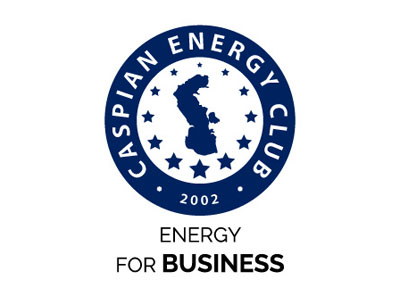Caspian Energy (CE): What was the impact of the high level of gas and electricity prices on the transport industry?
Adina Vălean, European Commissioner for Transport: It’s true that the transport industry is among those most affected by rising energy prices. However, the impact depends to a certain degree on the share of fuel costs compared to other costs, like labour, insurance, and maintenance. In the maritime sector, fuel is certainly the highest cost; but for rail, it is the lowest. For road freight transport, fuel costs are significant, together with labour costs, but the ration between the two varies significantly between countries.
Let’s bear in mind that due to the COVID-induced economic downturn, we are coming from a very low level, so price increases sometimes look disproportionately high. In fact, in the first half of 2021, household gas and electricity prices were comparable with those of the second half of 2018.
Having said that, in the past energy prices often fell as quickly as they rose. But today, actions to step up the fight against climate change may mean that fossil fuel prices remain high. This is without taking into account other factors affecting prices, such as geopolitical developments, higher international demand due to economic recovery, insufficient maintenance work on energy installations in some countries, and the impacts of the COVID pandemic and major accidents on supply chains. In short, higher energy prices will become the new normal.
To mitigate the impact on industry – and households – the Commission has presented a toolbox of short-, medium- and long-term actions that will benefit transport companies, among others. For transport, we have also introduced measures designed specifically to provide relief, such as flexibility on access charges for use of certain infrastructure.
In the long run, however, the solution can only be to reduce dependency on polluting fuels – not only to protect the climate, but also to foster economic growth, in part through encouraging innovative investment. The rise in carbon prices is already a strong disincentive to invest in fossil fuel energy carriers.
The Commission has proposed carbon pricing initiatives to support a move to cleaner fuels. These include widening the scope of the Emissions Trading System, lowering the minimum tax rate for efficient and clean fuels. We are also now entering discussions with the other EU institutions on our proposals to boost the uptake of sustainable alternative fuels, and – by consequence – the vehicles that run on them.
CE: What innovative and technological innovations in terms of safety and speed of movement are shortly expected in the EU transport highways according to the TEN10 plan?
Adina Vălean: Road transport accounts for around 90% of the total inland passenger transport and three-quarters of inland freight transport. So safety is paramount, and the key is a ‘safe systems’ approach. This means making every aspect of driving safe, from the vehicle itself to signage and, of course, infrastructure.
Our proposal for a revised TEN-T Regulation includes several requirements to improve safety, including separate carriageways for traffic going in opposite directions; the absence of level-crossings on any road, rail or tram track, or crossing cycle or footpaths. We also stipulate that TEN-T roads must not serve bordering properties, drivers should find rest areas at least every 60km, and safe and secure parking areas for commercial vehicles at least every 100km. We also call for weigh-in motion systems to be installed at least every 300km.
At the level of technology, we are prioritising intelligent traffic management, including dynamic congestion charges and tolls varied based on the time of day, week or season; and the use of innovative technologies check compliance with EU rules.
The provision of intelligent transport systems (ITS) on the TEN-T network is regulated by the ITS Directive. In December I also presented proposals to update this Directive, to foster and accelerate the deployment of intelligent transport services, such as the provision of real-time data on speed limits and traffic flows. More accurate and complete data will certainly help to improve road safety.
Setting speed limits – along the TEN-T and elsewhere – is the prerogative of the EU Member States. However, in accordance with the 2019 vehicle General Safety Regulation, all new vehicles will have to be equipped with intelligent speed assistance systems by July 2024. These will help improve compliance with set speed limits.
CE: With which countries are you planning to develop overland cross-border routes? Which destinations are most interesting for EU citizens in terms of tourism?
Adina Vălean: The TEN-T Core Network Corridors will become the ‘European Transport Corridors’, and are the EU’s main transport arteries.
The Commission has drafted maps setting out potential TEN-T extensions to neighbouring countries. Currently, the indicative TEN-T has been extended to the European Economic Area (EEA) and the European Free Trade Association (EFTA), the Eastern Partnership countries, the Western Balkans and Turkey. Negotiations with the countries of the South Mediterranean region are ongoing. This covers the vast majority of our neighbours, and no further extensions are foreseen at the moment. These extensions should be regarded in terms of infrastructure development, rather than new routes. That said, when the maps were prepared, current transport flows were taken into account and reflected.
CE: Are there plans to build overhead high-speed trains similarly to the Chinese and Japanese ones, based on technologies of interaction of electromagnetic fields? Has the EU already experienced such technologies?
Adina Vălean: Hyperloop has great potential as a low-energy and carbon-neutral transport mode, and it is certainly of interest as we define future mobility.
The dream is to have a transport mode that is as fast as a plane, and as convenient and clean as a train. The potential of hyperloop to be all of these things is what makes it so interesting, and is the reason we refer to hyperloop in our Sustainable and Smart Mobility Strategy.
In the best possible scenario, hyperloop would use magnetically levitated pods in vacuum tubes to transport people and goods at very high speeds – in theory over 1,000 km/h.
It is clear that regulatory and standardisation aspects are a priority from the outset, and we have already started assessing requirements in terms of safety, security and interoperability. As we move forward, I see the Commission’s role as facilitating testing and trials, and making the regulatory environment fit for innovation.
Aside from what hyperloop could offer mobility, I am also interested in its potential added value for the EU economy – a number of European companies are active in this emerging market. Proactively shaping our future mobility by developing and validating new technologies and services is key to staying ahead of the curve.
But ultimately, whether or not the Commission gets behind a hyperloop network will depend very much on the business case for the technology, as well as on Member States’ commitment to investing in this new technology.
CE: What changes will be made in the infrastructure in order to increase the import of new volumes of gas?
Adina Vălean: It is clear that any further development of our energy infrastructure must reflect changing realities and be coherent with our climate ambitions.
Development of the gas grid continues, and a number of ‘Projects of Common Interest’ are due for completion in the next few years. This will mean access to several gas sources or the global LNG market for all Member States.
While natural gas will play a role in the energy transition, the sector must also increase their use of alternative fuels. The closer we move to our climate neutrality target, the more natural gas will be replaced by renewables and low-carbon gases, in particular biomethane and hydrogen. We will need the right infrastructure to make this happen, but decisions on building new natural gas infrastructure must follow careful analysis, be market-driven and commercially viable.
Today, renewable and low-carbon gases account for a small share in the EU energy mix, but this will change. I expect hydrogen, for example, to play an important role in decarbonising transport. The Commission has proposed developing cross-border hydrogen networks within the context of the Trans-European Network for Energy (TEN-E) Regulation. The proposal covers both repurposing existing assets for exclusive hydrogen transport and building new assets such as pipelines, compressor stations, storage, and terminals for import of liquid hydrogen.
In the Hydrogen and Decarbonised Gas Markets Package that the Commission adopted on 15 December 2021, we also set out measures to facilitate access to the existing gas network for renewable and low-carbon gases, and to develop a dedicated hydrogen infrastructure and market.
CE: What changes are expected in the shipping industry in connection with new environmental requirements and standards?
Adina Vălean: Calls to decarbonise the maritime industry are getting louder, both within the EU and worldwide. So I am pleased that the industry is on side with our vision of decarbonisation as this was not the case for all stakeholders a few years ago.
But even with all on board, the transition to greater sustainability cannot take place overnight. The Commission’s FuelEU Maritime initiative, which I presented last summer, is instead designed to increase demand for alternative fuels by introducing gradual and affordable requirements on the use of sustainable alternative fuels.
We have also proposed an Alternative Fuel Infrastructure Regulation that would make having the infrastructure to use alternative fuels mandatory. For the time being, we are focusing on onshore power supply in ports.
The Commission has also proposed to revise the Renewable Energy Directive, which concerns the certification of these fuels, and to include shipping in the EU Emissions Trading System.
Alongside greenhouse gas emissions, we also want to reduce sulphur emissions from shipping. Sulphur emission control areas have already been agreed and are operational in the North and Baltic Seas, while the Mediterranean is scheduled to follow in 2025.
Last but not least, and with an eye on safety and protection of the marine environment, the European Maritime Safety Agency is running the Black and Caspian Sea Project for technical assistance. It brings together national, European and international stakeholders to raise standards.
Thank you for the interview.





